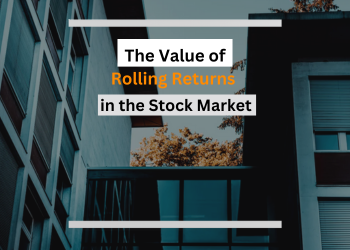There are several options available to us while investing in mutual funds, ranging from schemes with varying asset allocations like debt, hybrid, and equities to schemes in different categories like small-cap, mid-cap, and large-cap. The best mutual fund for you will rely on a number of variables, including your needs, risk tolerance, and investment horizon. However, the rolling return is a crucial consideration when contrasting various plans.
Over time, mutual funds offer a means of accumulating wealth. Rolling returns are a crucial tool for evaluating the past performance of a fund across various time horizons.
We are wary about the worth of our hard-earned money as investors. Therefore, we attempt to assess mutual fund performance using a variety of indicators prior to selecting the appropriate mutual fund.
Let’s examine rolling returns, their significance, and how they might aid in your investment decision-making.
Rolling Returns
A dynamic view of a mutual fund’s performance over varying time periods is offered by rolling returns. Rolling returns provide a more comprehensive view than standard point-to-point returns, which are measured across predetermined time periods like one year or three years. They take into account all potential investment times within a selected duration, providing a more accurate view of a fund’s consistency and capacity to generate returns in the face of shifting market conditions.
How Do Rolling Refunds Operate?
In order to comprehend rolling returns, let’s look at an illustration. Assume you have the daily NAV data for ten years and that we are interested in analyzing the 5-year rolling returns of a mutual fund over a ten-year period (1 January 2012 to 31 December 2022).
The annualized returns of the fund should be calculated for each of the ten years. Begin with the first five years, which span from 1 January 2012 to 31 December 2016, then move the window one day, from 1 January 2012 to 1 January 2017, recalculate, and so on. A series of annualized returns for different 5-year periods are the outcome of this.
The computation of averages comes next. Determine the average return after obtaining the annualized returns for each of these five-year intervals. Over the course of ten years, the fund’s rolling five-year returns are represented by this average return.
The Significance of Rolling Returns
Recording Market Cycles:
Investors can better understand the cyclical nature of markets by using rolling returns. A fund may do very well during one period of time and very poorly during another. Rolling returns offer information about the overall performance of funds during various stages of the market.
Evaluation of Consistency:
You can evaluate a fund’s return-generating consistency by computing rolling returns. A high rolling return suggests that the fund has delivered strong performance throughout a range of time periods.
Fair and impartial
If absolute returns are computed during times of extreme market conditions, they may give false information. Rolling returns mitigate the effects of volatile markets and provide a more balanced view.
In summary, investors in mutual funds who want to gain a better knowledge of fund performance might benefit greatly from using rolling returns. Through the analysis of a fund’s returns over different time periods, investors can make better-informed selections that are consistent with their financial objectives. Recall that although rolling returns offer insightful information, a thorough evaluation of mutual funds involves more than just rolling returns. Investing decisions that are more assured and profitable can be made by combining rolling returns with additional metrics and careful investigation.

